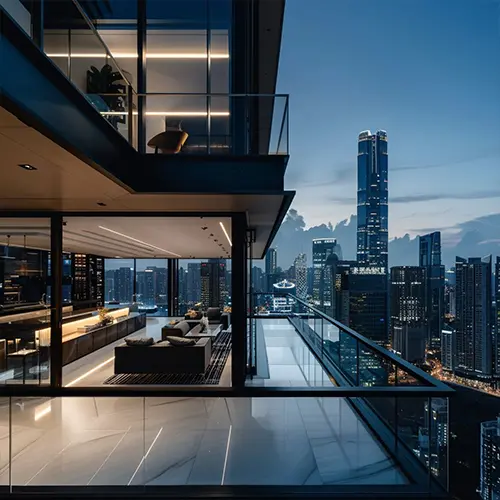The branded residences sector is experiencing exponential growth, with over 640 projects globally as of 2023, marking a 150% increase over the past decade. This expansion is particularly pronounced in emerging markets, where rapid urbanization, economic growth, and rising affluence are fueling demand for lifestyle-oriented luxury developments.
Branded residences, which were once concentrated in North America, are now thriving in regions like the Middle East, Latin America, and Southeast Asia. These areas are seeing significant investment and interest due to their favorable demographics and increasing appeal to both local and international buyers.
The Middle East is a leader in branded residential growth, with Dubai at the forefront. Hosting over 30 branded residential developments, Dubai has become a hub for both urban and resort-style branded projects. Riyadh and Doha are also gaining traction, as regional wealth and global connectivity attract high-net-worth individuals. Hospitality giants such as Four Seasons, Ritz-Carlton, and Armani have anchored projects in these cities, blending luxury living with global brand recognition (Savills, 2023; Knight Frank, 2023).
Latin America’s branded residential market is rapidly expanding, with Mexico, Costa Rica, and Brazil leading the charge:
Southeast Asia continues to grow as a key region for branded residences, particularly in countries like Thailand, Vietnam, and Indonesia. The strong tourism infrastructure in these nations aligns well with branded developments, attracting global buyers seeking second homes or investment properties (Knight Frank, 2023).
According to Knight Frank (2023), branded residences command a price premium of 25-35% compared to non-branded properties in similar locations. These developments offer significant benefits to developers, including:
Branded residences are increasingly catering to evolving buyer preferences for wellness and experiential living. The Global Wellness Institute (2021) estimates the global wellness real estate market to be worth $275 billion, with growing integration of features such as biophilic designs, health-focused amenities, and sustainable practices.
Additionally, branded developments are leveraging advanced technology, offering smart home systems, concierge apps, and personalized resident services to create an elevated living experience. These features make branded residences a compelling choice for discerning buyers.
As lifestyle preferences shift and experiential living becomes mainstream, will branded residences remain exclusive to high-net-worth individuals? Or will future demand expand to include a broader demographic seeking wellness, sustainability, and curated experiences in their homes? The continued innovation in this sector will shape its accessibility and appeal in the years to come.
